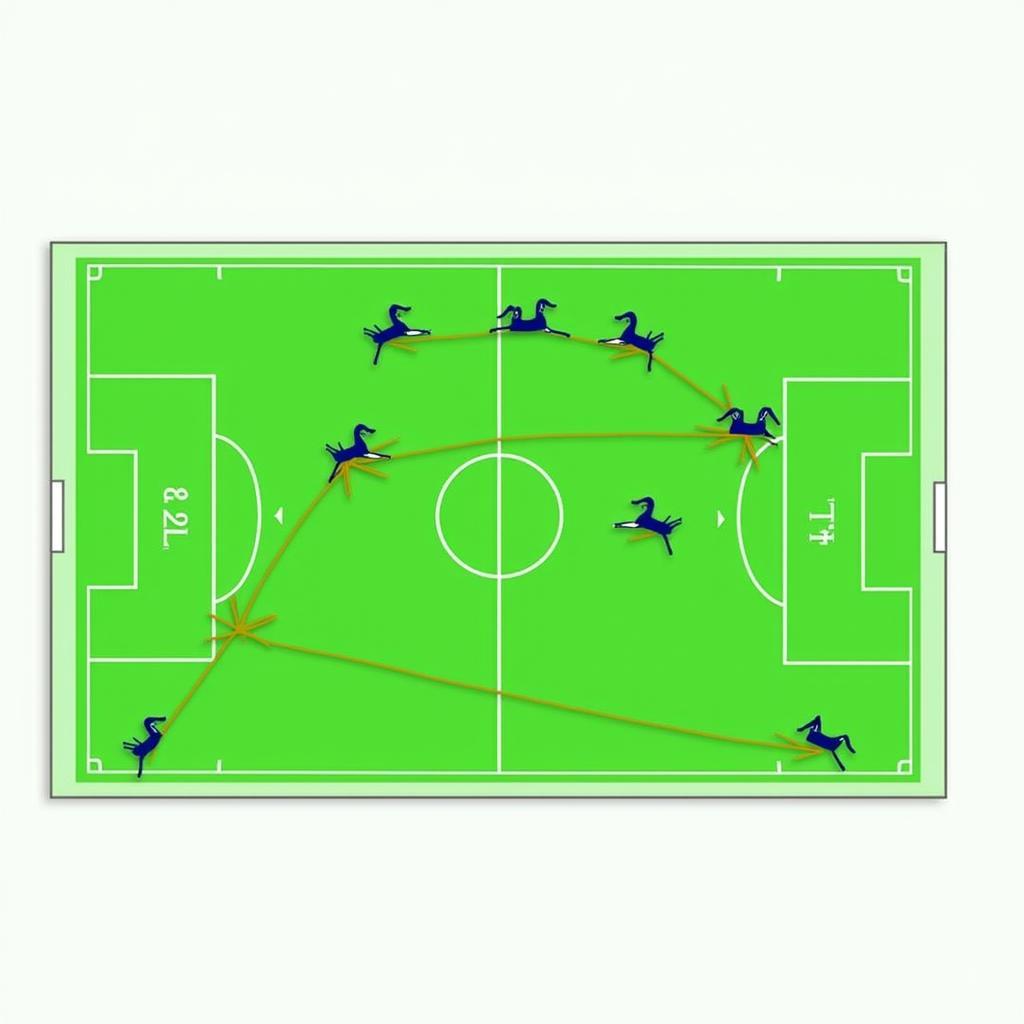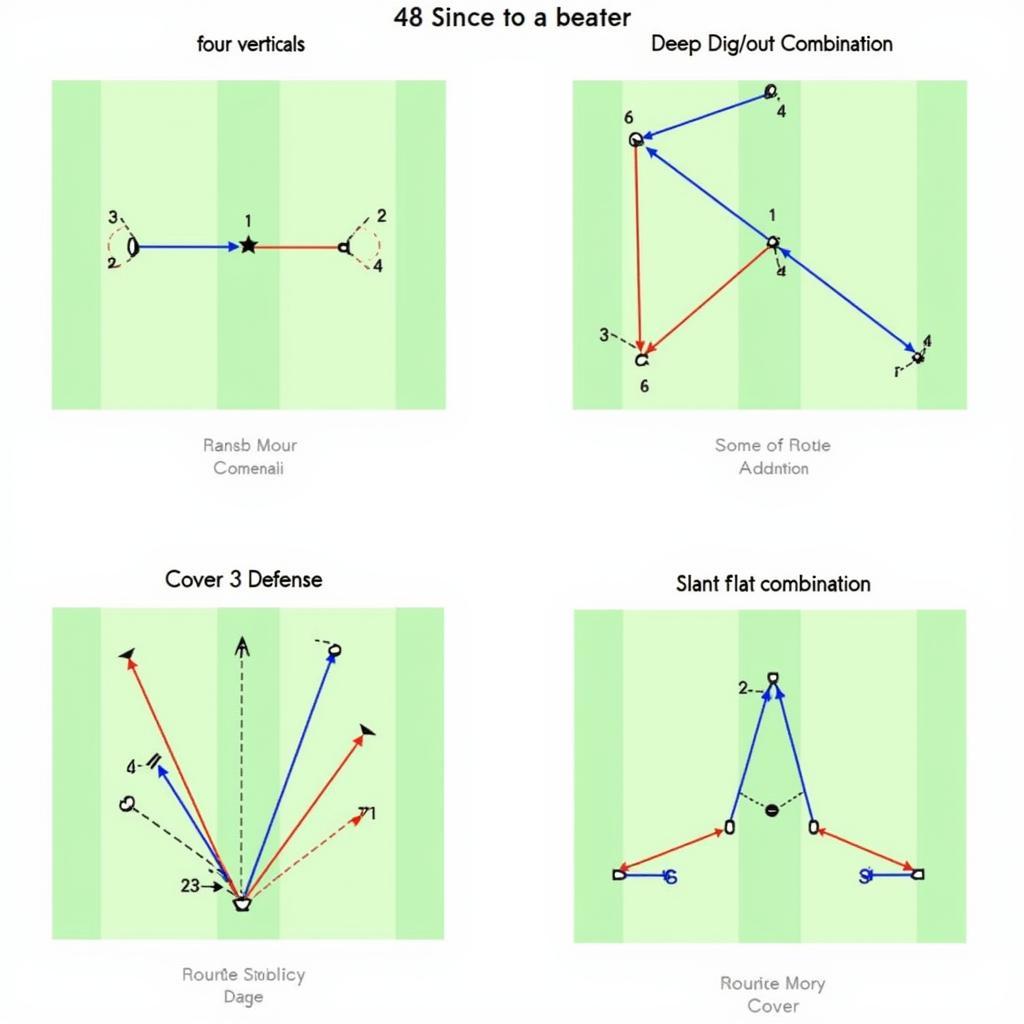The Cover 3 defense is a staple in football, known for its effectiveness in protecting the deep field. However, every defense has its weaknesses, and that’s where the Cover 3 Beater comes in. This article will delve into the intricacies of the Cover 3 beater, exploring its purpose, variations, and strategic implementation to help you dismantle this common defensive scheme.
Understanding the Cover 3 Defense
Before we dive into the specifics of beating it, let’s first establish a clear understanding of the Cover 3 defense itself. In this zone coverage scheme, the free safety and two cornerbacks are responsible for the deep thirds of the field, while the two safeties and two outside linebackers cover the underneath zones.
The Cover 3 defense is designed to limit big plays and force offenses to move the ball methodically down the field. Its strength lies in its ability to take away deep passing options and create turnovers by baiting quarterbacks into risky throws.
Exposing the Weakness: The Concept of a Cover 3 Beater
The Achilles’ heel of the Cover 3 defense lies in the seams between the deep and underneath zones, particularly in the areas between the cornerbacks and the outside linebackers. This vulnerability stems from the fact that defenders in these zones are often forced to cover a wide area, making them susceptible to well-timed routes that exploit these gaps.
Enter the Cover 3 beater – a strategic offensive play specifically designed to attack these soft spots in the Cover 3 defense. The primary goal is to create confusion among the defensive backs and linebackers, forcing them to make split-second decisions that often result in favorable matchups for the offense.
 Cover 3 Zone Defense Weaknesses
Cover 3 Zone Defense Weaknesses
Effective Cover 3 Beater Concepts
There are several effective Cover 3 beater concepts, each with its own unique approach to attacking the defense’s weaknesses. Here are a few notable examples:
-
Four Verticals: This classic Cover 3 beater stretches the defense vertically, forcing the safeties to make a choice: cover the deep middle or the seams. If the safeties commit to the deep routes, the seam routes become open for significant gains.
-
Mesh Concept: The Mesh concept involves two receivers running shallow crossing routes, creating traffic and confusion for the underneath defenders. This often leaves one of the crossing routes open for a quick pass and potential yards after the catch.
-
Deep Dig/Out Combination: This combination route attacks the sideline and the deep middle simultaneously. The outside receiver runs a deep out route, holding the cornerback outside. Meanwhile, the slot receiver runs a deep dig route, aiming for the void created by the cornerback’s movement.
-
Slant-Flat Combination: This combination route exploits the quick passing game. The outside receiver runs a quick slant route, drawing the attention of the cornerback. This creates space for the running back to slip out into the flat, often uncovered.
 Effective Cover 3 Beater Plays in Football
Effective Cover 3 Beater Plays in Football
Strategic Implementation and Execution
Successfully executing Cover 3 beaters requires not only choosing the right play but also precise timing, communication, and execution from the quarterback and receivers. Here are some key considerations:
-
Quarterback Reads: The quarterback plays a crucial role in identifying the coverage and making the correct read. He must quickly diagnose the defense and determine which route within the concept is most likely to be open.
-
Route Timing: Precise route timing is essential for creating separation and exploiting the seams in the Cover 3 defense. Receivers must run their routes at the correct depth and tempo to ensure they arrive at the open areas when the quarterback is ready to throw.
-
Adjustments at the Line of Scrimmage: Pre-snap adjustments are crucial for exploiting any weaknesses in the defensive alignment. The quarterback and receivers should communicate effectively to make any necessary changes to the play based on the defensive look.
Conclusion
The Cover 3 beater is an essential tool for any offense looking to counter the effectiveness of the Cover 3 defense. By understanding its purpose, variations, and strategic implementation, you can exploit the vulnerabilities of this common defensive scheme and create scoring opportunities for your team. Remember, successful execution relies on a combination of play selection, precise timing, communication, and adaptability on the field.





